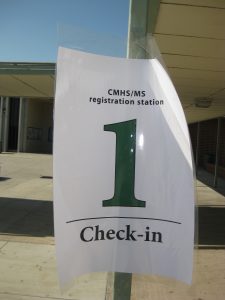Year after year, schools enroll new students. For public schools, the process is a little less rigorous, but for most private schools, each student has to go through some sort of application process that determines their ability to succeed in that environment. An essay, teacher recommendations…something to help determine if they are "acceptable." Whether public or private, all students start the school year off with a track record – all the data, evidence, and documentation that make up a student’s academic story. But do educators equally judge the students they serve? More often than not, those with acceptable track records are not judged on their past, but on their potential. Interestingly, those with tarnished records are not judged on their potential but on their past. Is that fair to the student? Don’t all students have the potential to succeed? Does a student’s track record measure who they will turn out to be, or do they grow to measure up to their track record?

In any case, a student’s file might suggest potential, but it doesn’t determine success. Educators play a huge role in helping to shape the success of a child. We’ve heard multiple stories from successful adults about "the teacher that changed their life" – the one educator that saw their potential and helped them realize it.
Although difficult, teachers must see the potential in every child they serve. They must understand that each child has room for growth in order to believe that there is greater potential in every student. And more than that, they must make the child believe it! A fixed mindset cannot see beyond to a world of potential because a content mentality doesn’t value the search for better.
Potential includes the achievements just beyond what a student has already done. However, to truly work towards attaining that next level of growth, one needs to value getting to the next level more than they value the one they have already attained. This does not always come naturally to a child. Helping a child discover their potential is an exercise in finding and pushing their limits.
Success can only be achieved through effort, willpower, resilience, perseverance, and grit. Yes, grades and test scores are important, but without the aforementioned, one cannot consistently find success nor discover their true potential. Many will argue that it is the parents’ job and that the seeds of success are planted at home. The reality is that not every student has the most ideal, supportive family life. Statistics show troubling numbers of children nationwide who do not even receive the basic needs of survival, such as food and shelter, from their "home life." When a child’s reality requires them to persevere through some of the most unfathomable situations at home, how do you expect them to thrive and believe in themselves at school? The process to begin tackling these issues is so multifaceted, and of course there is not one concrete solution, so as an educator, where do you start?
As you look towards a new school year, ask yourself: will you be the inspiration your students need? Another year will bring another chance to help your students discover their own potential.
We want to know! What do you do to inspire your students?




 6. Provide good signage — Have adequate signage so parents know exactly where to go when they arrive. Have signs outside with a copy of the registration form pasted to it with instructions of where to go if they do not have the completed registration form.
6. Provide good signage — Have adequate signage so parents know exactly where to go when they arrive. Have signs outside with a copy of the registration form pasted to it with instructions of where to go if they do not have the completed registration form.